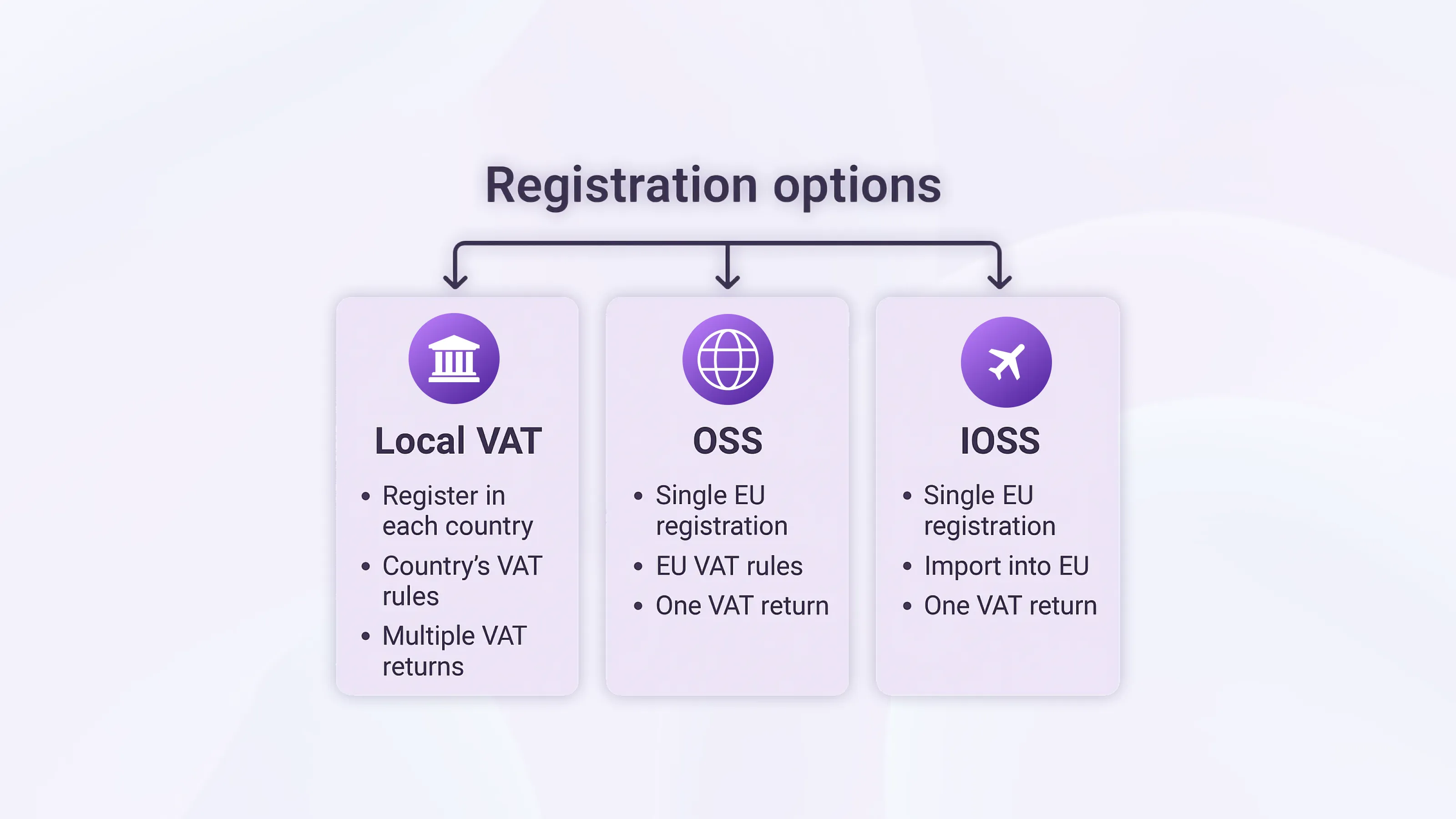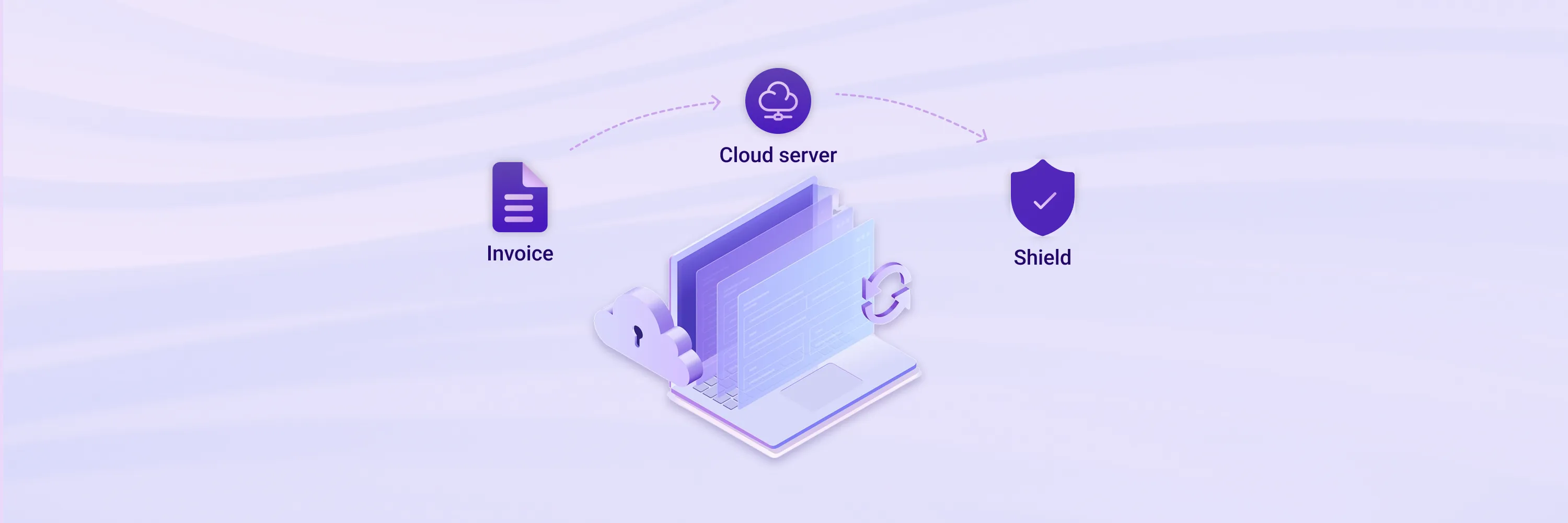What you will learn
Here is your step-by-step roadmap to the EU VAT system: when to register, how the One-Stop Shop (OSS) simplifies intra-EU trade, and what the forthcoming ViDA reforms mean for digital services.
Our guide will help founders, CFOs, and finance managers grow their business and boost sales without creating tax problems.
1. Map your EU VAT exposure
Mapping your EU VAT exposure is a critical strategic exercise for any business operating or planning to operate in Europe. It's about understanding precisely where, why, and to what extent your business has a legal obligation to collect, declare, and remit VAT in European Union.
Even before the first sale, identify where obligations arise.
Quick self-check:
- Do you ship goods from one EU country to customers in another?
- Do you provide digital services to EU consumers?
- Do you hold stock in an EU warehouse or via fulfillment centers?
A yes to any question triggers VAT registration or OSS/IOSS enrollment.
Here’s more insights into VAT Compliance for SaaS and Digital Services in the EU
2. Register strategically: VAT numbers, OSS, and IOSS

Strategic VAT registration is about making informed decisions to simplify compliance, reduce costs, and support your business growth, rather than just reacting when you hit a legal threshold.
For businesses operating in Europe, this means understanding the three key types of registration: national VAT numbers, the One-Stop Shop (OSS), and the Import One-Stop Shop (IOSS).
Registration paths now depend on what you sell and where you sell it.
Traditional local VAT number:
- Needed if you hold inventory or make domestic sales in that Member State.
- Application time ranges from one week to three months.
One-Stop Shop (OSS):
- Covers intra-EU B2C goods and most digital services.
- File a single quarterly return and pay VAT to one tax office, which then redistributes the money.
- Adoption exploded with nearly 130,000 companies using the system by 2022.
What’s the Difference Between EU VAT vs. OSS VAT
Import One-Stop Shop (IOSS):
- Handles low-value goods (≤ €150) shipped from non-EU locations to EU consumers.
- Avoids customers being hit by surprise duties at delivery.
The OSS toolbox raised revenue. Member States collected over €17 billion in 2022, which marked a 26% increase compared to 2021.
Marketplace VAT Obligations for Online Sellers: What You Need to Know outlines a brief comparison of modern compliance strategies.
3. Charge the right rate every time
Despite varying EU VAT rates across member states, they all adhere to a common framework set by the European Union.
While the EU countries are free to set their own standard and reduced rates, these should fall within the minimum thresholds defined by the EU directives to ensure sufficient harmonization and prevent excessive tax competition.
- A standard rate of at least 15% is mandatory in each Member State in line with Article 97 of the VAT Directive.
- Pursuant to Council Directive 2022/542, since the 2022 reforms, countries may set up to two reduced rates as low as 5%, plus one super-reduced or zero rate for essentials such as food or medicine.
Tips for SaaS pricing engines:
- Store customer location evidence (IP, billing address) for ten years.
- Sync rate tables weekly because governments change them with little notice.
- Show VAT-inclusive prices to EU consumers; B2B customers can enter a valid VAT number to remove the charge.
Best practices on rate automation and compliance
4. Issue compliant invoices and collect evidence
Issuing compliant invoices and collecting evidence is critical for VAT compliance and audit defense.
An invoice is not just a bill; it's a legal document that serves as the primary evidence for both the seller and the buyer. For the seller, it proves that the correct VAT was charged or zero-rated. For the buyer, it's the main document used to reclaim input VAT. Audits, whether internal or external, are a detailed examination of a company's financial records, processes, and controls.
Narrative:
- Invoices must show your VAT number, the buyer’s number (for B2B), VAT rate, and amount.
- Digital signatures are allowed in most countries. File formats range from PDF to structured XML (Factur-X, FatturaPA).
Bullets:
5. Make file returns and pay timely
For many founders, CFOs, and finance managers, filing tax returns feels like hitting the brakes on business momentum. It's a daunting task that can divert valuable time and resources away from what you do best: driving sales and growing your company. But what if tax compliance wasn't a chore, but a seamless part of your financial strategy?
Each scheme entails its own calendar:
- OSS: quarterly, due by the end of the month following the period.
- Local VAT numbers: mostly monthly or quarterly, with payments in euros.
- Late filings incur penalties up to 25% of the VAT due.
Avoid currency shocks:
- Convert sales into the local currency using the European Central Bank rate on the transaction date.
- Automate journal entries to avoid manual errors.
To stay on top of filing and OSS pitfalls, ourOne-Stop Shop Schemes – Brief Overview breaks down timelines and best practices.
6. Monitor the VAT gap and fraud risks
VAT fraud is a serious crime that costs governments billions in lost revenue and can have severe consequences for businesses, even those that are unintentionally caught up in fraudulent schemes.
The EU is leaking cash:
Action list:
- Verify VAT numbers via the VIES tool before zero-rating B2B sales.
- Adopt data analytics to flag carousel fraud patterns.
- Keep proof of transport for intra-EU goods to secure a zero rate.
7. Prepare for ViDA and upcoming digital reporting
VAT in the Digital Age (ViDA) initiative is arguably the most significant overhaul of the EU's VAT system in decades. For founders, CFOs, and finance managers, it's not just a set of new EU VAT rules; it's a fundamental shift in how tax compliance will be managed, moving from periodic reporting to near-real-time digital processes.
Narrative:
Bullets:
- Upgrade ERPs to create structured e-invoices.
- Store data in formats accepted by tax platforms like XML and JSON.
- Participate in pilot programs to iron out errors before deadlines.
EU VAT system explained
The European VAT regulations provide a tax framework where goods and services are taxed in the country of consumption, with a standard rate of at least 15%, optional reduced rates, and mechanisms like the One-Stop Shop lets businesses report pan-EU sales through a single return, while each Member State receives its share.
Conclusion
Navigating VAT in European Union rules is essential for any international seller. From OSS and IOSS to compliant invoicing and ViDA reforms, understanding the framework ensures smooth cross-border trade, fewer risks, and stronger customer trust. With the right strategy, VAT shifts from a burden to an advantage for scaling your business in the EU.


